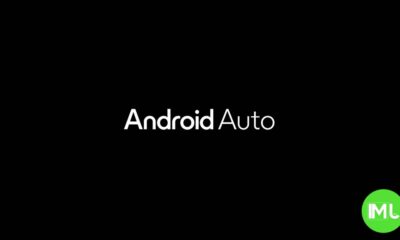Google releases open-source watermarking tool to detect AI-generated text

Google has made its watermarking tool, SynthID, available as an open-source technology to help detect AI-generated text. This move is part of Google’s broader efforts to promote responsible AI development and is now part of their Responsible Generative AI Toolkit. SynthID was initially developed to make it easier to identify content generated by large language models (LLMs).
How SynthID Works
SynthID works by embedding an invisible watermark into AI-generated text, images, audio, and video, making it detectable by software but invisible to humans. The watermark is integrated into the generation process without compromising the quality, accuracy, or creativity of the content.
When a large language model generates text, it predicts and selects the next most likely word or token based on probability scores. For instance, if the phrase “My favorite tropical fruits are __” is entered, the model might generate the words “mango,” “papaya,” or “lychee.” SynthID adjusts these probability scores slightly to create a watermark. These adjustments occur throughout the text, embedding a pattern that can later be identified as AI-generated.
Google claims SynthID works even with short text (as little as three sentences) and can still detect AI content even if it’s paraphrased or modified. However, the tool struggles with detecting very short text, text that’s been significantly rewritten, or content translated into other languages.
Why Watermarking is Important
Watermarking AI-generated content is becoming crucial in the current landscape, where AI models can be misused for malicious purposes such as spreading misinformation or creating inappropriate content. Governments are starting to take notice—California is exploring the idea of making watermarking mandatory, and China has already implemented regulations requiring it.
Although SynthID isn’t a perfect solution, it marks an important step in the development of tools to identify AI-generated content. Google notes that it’s not a “silver bullet” for solving all problems related to AI identification but says it’s a building block toward more reliable solutions.
Impact on Developers
By releasing SynthID as open-source software, Google hopes to empower other AI developers to incorporate similar watermarking technologies into their own models. This could help create a more responsible AI ecosystem by making it easier to track and identify AI-generated text across different platforms.
Pushmeet Kohli, Vice President of Research at Google DeepMind, shared with MIT Technology Review that developers using large language models will benefit from the open-source SynthID. It will allow them to detect whether their own models have produced the text, ensuring they contribute to responsible AI practices.
Conclusion
Google’s decision to open-source SynthID is a significant step in advancing AI transparency. While it’s not a complete solution for identifying AI-generated content, it provides developers with a tool to build more responsible AI systems. As more developers integrate SynthID or similar watermarking techniques, the technology will likely improve, helping to make AI-generated content more transparent and trustworthy.
In an AI-driven world, tools like SynthID will become increasingly vital for distinguishing between human-created and AI-generated content, supporting informed decision-making and protecting users from potential misuse of AI technology.
Android
Android 15 grows slowly, while Google brings new AI tools to search and creators

Google has shared the latest Android version usage numbers, showing that Android 15 is still in the early stages of adoption. As of April 2025, only 0.1% of Android devices are using Android 15. This version is currently in its beta phase, mostly available on Pixel and select partner phones. Android 14 leads the way with a 35.2% share, followed by Android 13 at 17.3% and Android 12 at 15.4%. Android 11 still holds 12.4%, showing how long older versions stick around.
Meanwhile, Google is also making changes in its AI efforts. The Gemini AI “prompt bar,” first seen in the Chrome browser, is now being tested in Google Search. This new feature lets users type or click suggestions to ask questions directly using Gemini, making search more interactive. It’s rolling out to more people gradually.
In addition to that, Google introduced Veo, a powerful video generation tool for creators. Veo can make high-quality videos from simple text prompts, using advanced AI to understand scenes, emotions, and cinematic styles. Google is currently letting select creators try Veo through a waitlist.
Together, these updates show how Google is improving both its Android platform and AI services. While Android 15 adoption is just beginning, features like the Gemini prompt bar and Veo highlight the company’s growing focus on AI to enhance user experiences across devices and tools.
Alphabet’s earnings rise in Q1 2025 with help from ads and AI growth

Alphabet, the parent company of Google, shared its financial results for the first quarter of 2025, showing strong growth thanks to advertising and its AI efforts.
From January to March 2025, Alphabet earned $80.5 billion in revenue, which is up 15% compared to the same period last year. Net profit reached $23.7 billion, a big jump from $15 billion in Q1 2024.
Google’s advertising business played a major role in this success. YouTube ads brought in $8.1 billion, growing 21% year over year. Meanwhile, Google Search made $46.2 billion, showing steady demand.
Google Cloud also performed well, making $9.6 billion, a 28% increase from last year. Profits for the Cloud division came in at $900 million, compared to $191 million in the same quarter last year.
Alphabet also announced a major stock buyback plan worth $70 billion. This move usually helps increase shareholder value by reducing the number of shares on the market.
CEO Sundar Pichai highlighted the company’s focus on AI, especially tools like Gemini, which are now used in Google products and services. He said AI is a key part of Google’s future and will continue to shape its products.
Overall, Alphabet started 2025 strong, with solid earnings across ads, cloud, and AI — proving its business is still growing in the right direction.
Google Photos gets new quick edit tool, while Google Maps shows off new design on Android

Google is rolling out two helpful updates for its popular apps — Google Photos and Google Maps — aiming to make things faster and easier for Android users.
First, Google Photos is introducing a new “Quick Edit” feature that lets you quickly tweak your photos without fully opening the edit menu. A small pencil icon now appears at the bottom of each photo. Tapping it brings up suggested edits powered by AI, letting you apply improvements with just one tap. This tool is especially handy for small fixes like lighting or color adjustments. While it’s starting to roll out, not everyone will see it immediately. Some changes might still open the full editor depending on the photo.
At the same time, Google Maps is testing a fresh look for its place sheets — the bottom panel that shows up when you tap on a location. The new design includes more rounded corners, a cleaner layout, and easier access to options like directions, saving, or sharing a place. This redesigned panel also keeps the location’s name, rating, and category in clearer view. It feels more modern and easier to navigate.
Both updates are gradually rolling out, so it might take a little time before they reach all Android users. These changes show Google’s ongoing efforts to make its apps more user-friendly and visually appealing.
-

 Apps1 year ago
Apps1 year agoGboard Proofread feature will support selected text
-

 News1 year ago
News1 year agoSamsung USA crafting One UI 6.1.1
-

 News1 year ago
News1 year agoBreaking: Samsung Galaxy S22 may get Galaxy AI features
-

 News1 year ago
News1 year agoSamsung Galaxy S23 Ultra with One UI 6.1 and all S24 AI features revealed
-

 News1 year ago
News1 year agoOne UI 6.1 Auracast (Bluetooth LE Audio) feature coming to many Samsung phones
-

 News1 year ago
News1 year agoSatellite SOS feature coming to Google Pixel phones, evidence leaked
-

 Apps11 months ago
Apps11 months agoGoogle’s fancy new Weather app is finally available for more Android phones
-

 News1 year ago
News1 year agoGoogle Pixel evolves as Europe’s third best selling flagship








